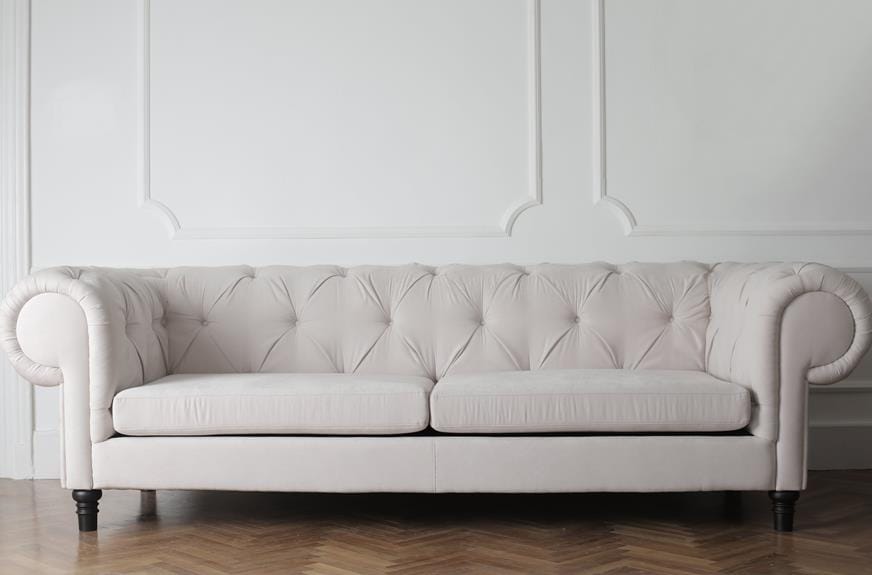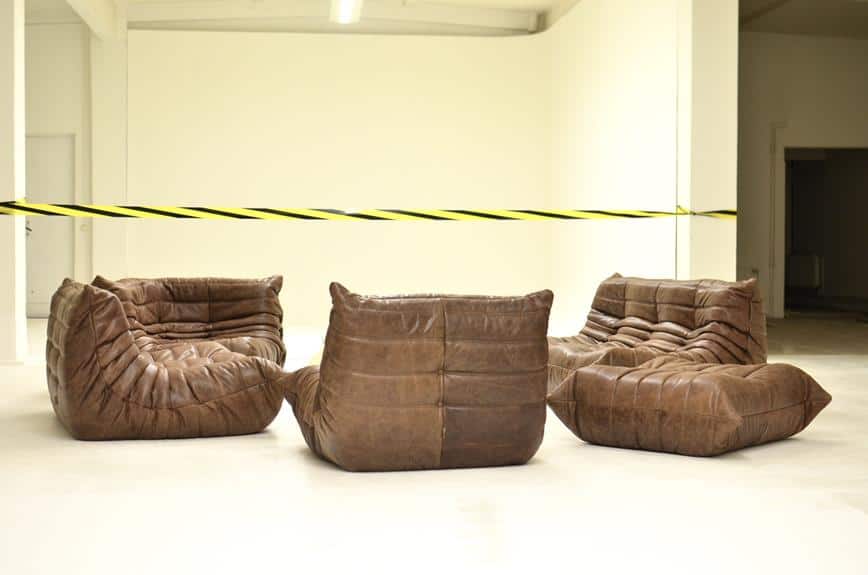Couches do not always have to match. Matching couches can give a room a uniform and formal look, while mixing different couches can create a unique and welcoming space that reflects personal taste and modern styles.
The choice depends on the size of the room, the homeowner’s style preferences, and the desired overall theme. Designers consider whether to prioritize visual symmetry or the flexibility of a varied setup to achieve a balance between a cohesive look and individual expression in the living area.
The Matching Couch Debate
There is a debate about whether couches should match. Some people prefer matching furniture sets for a unified look in the living room, which is easier for decorating and avoids design errors. Others favor a modern approach that mixes different furniture styles for personal expression and diversity in design.
Mixing furniture successfully requires finding elements that connect different pieces, such as similar colors or fabrics, to keep a cohesive look. This method also allows for incorporating unique items that add character to the room.
In the end, choosing to match or mix furniture is a personal decision based on individual taste, functionality, and the atmosphere one wishes to create in their living space. The main objective is to have a living area that is both comfortable and visually appealing.
Benefits of Uniform Sofas
Uniform sofas bring harmony and order to a living space. Matching seating simplifies design and creates a cohesive look that is both intentional and sophisticated. With uniform sofas, the room looks balanced and possibly larger, as the consistent style or color does not distract the eye.
A single color palette for all sofas anchors the room’s design, allowing other decor to stand out. This is useful in open-plan areas where furniture needs to connect smoothly between spaces.
Choosing matching sofas ensures the fabric and texture are the same, making the space look polished and simplifying maintenance, as the cleaning process is consistent for all pieces.
Pros of Eclectic Mixes
An eclectic mix of sofas in a room can add character and reflect the owner’s personal style. Different furniture pieces can be coordinated by color, texture, or style to create a cohesive look. This can prevent a room from appearing monotonous and keep it visually engaging. Mixing furniture from various periods can add depth and a sense of history to the space.
Using an eclectic mix can also promote sustainable consumer habits by allowing individuals to buy pieces separately over time, which can reduce waste. It offers the flexibility to change or update individual items without needing to replace all the furniture in a room.
To maintain a unified appearance, it’s important to carefully arrange different pieces of furniture. They should complement each other through a consistent color scheme, wood tones, or fabric patterns. When done well, an eclectic mix can produce an attractive and adaptable living space.
Design Harmony Guidelines
To achieve design harmony in a living space, it is important to choose couches that complement each other in terms of size, color, and texture. A room can look unbalanced if one piece of furniture is significantly larger or differently styled than the others. Couches of different styles can work together if they are similar in scale, allowing for a seamless visual flow in the room.
Color is key to a harmonious environment. Select a color scheme that connects the pieces of furniture, which can be based on colors from an area rug or wall art. The furniture doesn’t need to match exactly but should share a cohesive color palette.
Incorporating a variety of textures can add depth to a room. Combining different textures, such as leather with velvet or linen, should be done in a way that ensures they complement each other. For example, a shiny fabric on one couch can be balanced with a matte finish on another, to maintain a unified design.
Color Coordination Techniques
Color coordination techniques can improve the visual appeal of couches without them being identical. While matching furniture may seem ideal, it can result in a dull look. Adding a new piece with similarities to existing ones can create an engaging and intentional design. Consider using different shades within the same color family to add depth. For example, pair a dark navy sofa with a lighter blue loveseat.
To connect couches with contrasting colors, introduce accent pieces like throw pillows or rugs that feature both couch colors. Repeating these colors in other areas of the home can also create a unified appearance.
Balancing color distribution is important. If a room has a brightly colored couch on one side, place accessories with similar colors on the other side to keep the room balanced. Remember to consider color temperature; mix warm and cool tones evenly throughout the space.
The key to successful color coordination lies in using complementary colors and accents to link different elements within a room, adding both unity and personality to your home’s design.
Balancing Furniture Sizes
Balancing furniture sizes is important for the overall look and functionality of a room. When selecting furniture, consider the size of each piece in relation to the room and other furniture to avoid any piece dominating the space or disrupting the room’s balance.
A common error is picking a coffee table that is too big or too small compared to nearby seating. Choose a coffee table that matches the height and size of adjacent furniture to maintain visual flow and utility.
When combining old and new furniture, pay attention to proportions to ensure the pieces blend well together, regardless of style or age differences.
Balancing furniture sizes is about achieving a visually pleasing and practical living space that suits your personal style and needs.
Personalizing Your Space
Choosing the right furniture size is important for creating a personalized and balanced space. This approach allows you to express your style and achieve a space that reflects your personality and lifestyle. Selecting items that match your personal taste and that fit well together in size and proportion is key to a harmonious and individualized area.
When customizing your space, you are aiming for both comfort and self-expression. This effort is not about keeping up with current trends, but rather about assembling a space that embodies your identity. During this process, you may find offers from trusted partners that are in line with your preferences, which could help improve your design.
If you sign up for design newsletters, you may receive useful content that could inspire you to add distinctive features to your space. Always check that the advice and products offered fit with your established design approach.
Ultimately, personalizing your space is about making intentional choices that showcase your individual taste, regardless of your age. Your goal is to create an environment that feels like home.
Visit our corporate website for more advice on personalizing your interior; our site is part of Future plc and offers the latest in home design and décor.




